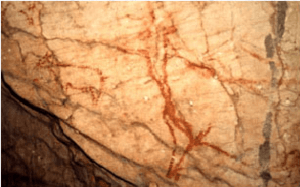Cave of Niño facts for kids
Quick facts for kids Cave of Niño |
|
|---|---|
| Native name Spanish: Cueva del Niño |
|
 |
|
| Location | Aýna, Spain |
| Official name: Cueva del Niño | |
| Type | Non-movable |
| Criteria | Monument |
| Designated | 1997 |
| Reference no. | RI-51-0009648 |
| Lua error in Module:Location_map at line 420: attempt to index field 'wikibase' (a nil value). | |
The Cave of Niño (Spanish: Cueva del Niño) is a special cave found in Aýna, Spain. It was officially recognized as a Bien de Interés Cultural (which means a "Property of Cultural Interest") in 1997. This title shows how important the cave is for its history and culture.
Contents
What is the Cave of Niño?
The Cave of Niño is a natural cave that has been home to humans for thousands of years. It is famous for its ancient cave paintings. These paintings give us clues about how people lived long, long ago.
Where is the Cave of Niño?
This amazing cave is located in the municipality of Aýna. Aýna is a small town in the Province of Albacete, which is part of the Castilla–La Mancha region in southeastern Spain. The area around the cave is known for its beautiful natural landscapes.
Discovering the Cave
People have known about the Cave of Niño for a long time. However, its importance for ancient history was truly understood when its prehistoric art was studied. Experts have carefully explored the cave to learn more about its past.
Ancient Art and Life
The Cave of Niño is most famous for its incredible cave paintings. These artworks were created by people who lived in the cave during the Stone Age. They used natural colors to draw animals, symbols, and sometimes even human figures on the cave walls.
Who lived in the cave?
Archaeologists, who are like history detectives, have found tools and other items in the cave. These finds tell us that early humans used the cave as a shelter. They hunted animals and gathered plants for food. The cave provided a safe place to live and create art.
Amazing Cave Paintings
The paintings in the Cave of Niño are examples of Levantine art. This is a special style of art found in eastern Spain. The artists often drew animals like deer and goats. They also depicted scenes of hunting and daily life. These paintings are like a window into the past.
Protecting the Cave
Because of its unique art and history, the Cave of Niño is very important. In 1997, it was given the title of Bien de Interés Cultural. This means it is protected by Spanish law. This protection helps make sure the cave and its ancient treasures are preserved for future generations to study and enjoy.
See also
In Spanish: Cueva del Niño para niños

